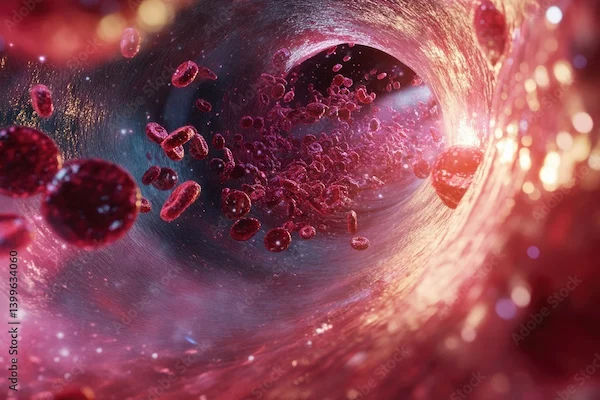Common Types of Medical Emergencies
Discover the most common types of medical emergencies, including heart attacks, strokes, seizures, trauma, and allergic reactions. Learn key signs, when to seek help, and how to respond effectively.

Written by Dr. Dhankecha Mayank Dineshbhai
Reviewed by Dr. Siri Nallapu MBBS
Last updated on 11th Aug, 2025

Introduction
Medical emergencies can happen suddenly and without warning. Knowing the most common types and how to respond can make a big difference in saving lives. This article will guide you through the key medical emergencies, their symptoms, causes, and what you should do in such situations.
1. Heart Attack (Myocardial Infarction)
A heart attack occurs when blood flow to a part of the heart is blocked, usually due to a blood clot. Without oxygen, the heart muscle begins to die.
Symptoms:
Chest pain or discomfort (feeling like pressure, squeezing, or heaviness)
Pain spreading to the arms, neck, jaw, or back
Shortness of breath
Cold sweat, nausea, or dizziness
What to Do?
Call emergency services immediately (Dial 108 or your local emergency number).
Chew an aspirin (if available and not allergic) to help thin the blood.
Keep the person calm and seated in a comfortable position.
Prevention Tips:
Maintain a healthy diet (low in saturated fats and cholesterol).
Exercise regularly.
Avoid smoking and excessive alcohol.
Monitor blood pressure and cholesterol levels.
2. Stroke
A stroke occurs when blood flow to the brain is interrupted, either due to a clot (ischemic stroke) or a burst blood vessel (hemorrhagic stroke).
Symptoms (Remember FAST):
Face drooping on one side
Arm weakness (one side may feel numb)
Speech difficulty (slurred or confused words)
Time to call emergency help immediately
What to Do?
Act fast—every minute counts! Call emergency services.
Note the time when symptoms first appeared (some treatments must be given within hours).
Keep the person lying on their side if vomiting occurs.
Prevention Tips:
Control high blood pressure.
Manage diabetes and cholesterol.
Avoid smoking and excessive alcohol.
Stay active and maintain a healthy weight.
3. Severe Allergic Reaction (Anaphylaxis)
Anaphylaxis is a life-threatening allergic reaction that can occur due to food (nuts, shellfish), insect stings, or medications.
Symptoms:
Swelling of the face, lips, or throat
Difficulty breathing or wheezing
Rapid pulse, dizziness, or fainting
Hives or rash
What to Do?
Use an epinephrine auto-injector (EpiPen) if available.
Call emergency services immediately.
Keep the person lying down with legs elevated.
Prevention Tips:
Avoid known allergens.
Carry an epinephrine injector if you have severe allergies.
Wear a medical alert bracelet.
Health Topic Carousel:
Doctor Speciality: General Physician
Text: Consult Top Specialists
4. Choking
When food or an object blocks the airway, oxygen cannot reach the lungs.
Symptoms:
Inability to speak or cough
Clutching the throat (universal choking sign)
Turning blue (cyanosis)
What to Do?
Perform the Heimlich maneuver (abdominal thrusts) if the person is conscious.
If unconscious, start CPR and call for help.
Prevention Tips:
Cut food into small pieces.
Avoid talking or laughing while eating.
Keep small objects away from young children.
5. Seizures
Sudden, uncontrolled electrical disturbances in the brain cause seizures (common in epilepsy).
Symptoms:
Uncontrolled jerking movements
Loss of consciousness
Staring blankly or confusion afterward
What to Do?
Do not restrain the person.
Clear the area of sharp objects.
Place them on their side to prevent choking.
Time the seizure—if it lasts more than 5 minutes, call emergency services.
Prevention Tips:
Take prescribed epilepsy medications regularly.
Avoid triggers like flashing lights (if photosensitive).
6. Severe Bleeding
Uncontrolled bleeding can lead to shock or death if not stopped.
Symptoms:
Heavy blood flow from a wound
Pale skin, dizziness, or fainting
What to Do?
Apply direct pressure with a clean cloth.
Elevate the injured limb if possible.
If bleeding doesn’t stop, call emergency help.
Prevention Tips:
Use caution with sharp objects.
Wear protective gear when working with tools.
7. Burns
Types:
First-degree: Red, painful skin (e.g., sunburn).
Second-degree: Blisters, severe pain.
Third-degree: White/blackened skin, no pain (nerve damage).
What to Do?
Cool the burn with running water (not ice).
Cover with a clean, non-stick bandage.
Do not pop blisters or apply butter/oil.
Prevention Tips:
Use oven mitts while cooking.
Keep hot liquids away from children.
When to Seek Emergency Help?
If you or someone experiences:
Chest pain, difficulty breathing, or sudden weakness
Severe burns, bleeding, or head injuries
Loss of consciousness or seizures
Conclusion
If you or a loved one has a medical condition that increases emergency risks, consult a doctor for preventive care. You can book a consultation or schedule tests through Apollo 24|7 for expert advice and timely care.
Emergencies can be frightening, but knowing how to respond can save lives. Stay informed, keep emergency numbers handy, and take preventive steps to stay healthy.
Health Topic Carousel:
Doctor Speciality: General Physician
Text: Consult Top Specialists




 for Health.webp)